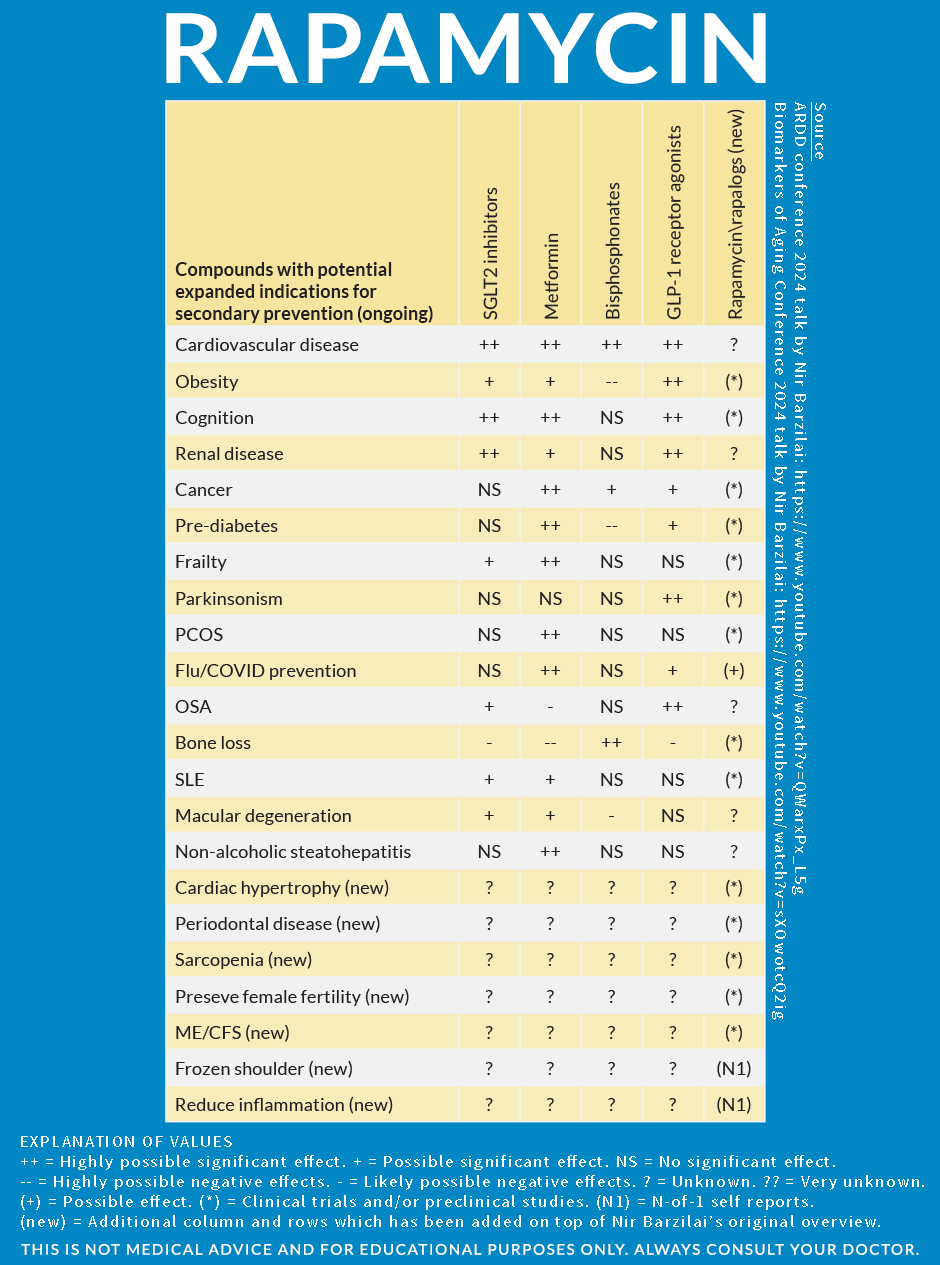I mostly agree. Though I think the animal evidence for rapa longevity is a bit better than your take, seems to me. In mice it’s pretty solid. In dogs/cats, obviously the longevity data simply isn’t there. Marmosets - once the study comes out officially, I’ll make up my mind about those.
My considerations are around safety. The PEARL trial, among others seems to say rapa is pretty safe. As always, dosage is key. You might derive “modest” benefits from a modest dose. A modest dose is a safe dose. A high dose is like a race car - great speed/benefits, but much greater risk, including that for some, gunning the engine that aggressively will flip the whole car, and have some mice die prematurely compared to a placebo. So possible greater benefits at the cost of safety. Matt Kaeberlein pointed out something important: you might slow down the aging and die prematurely. Rapamycin may genuinely slow down the aging substantially, but also weaken some key systems (like immunity), which will kill you opportunistically. That’s something to ponder. And that’s where dosage - benefits - risks comes in. So combine this with side-effect combatting drugs addressing possible lipid and glucose elevations (interestingly, seems might be even beneficial per the ITP), keep up with all the vaccinations and not go wild with unnecessary pathogen exposures.
The ideal is to gun the engine just enough to extract the maximum benefit in slowing aging, but not push it to the point of not making a corner (in our race car analogy). Trouble is, we don’t know where that dosage is, and for that matter might be individual for each of us. So a safer course of action might be to simply get in the car, and go somewhat faster but also not risk it almost at all, so middle of the track, no sharp corners. Maybe 30mg/week might be a huge benefit - with attendant risk. And maybe 3-6-9-12mg/week might be a modest benefit, with minimal risk. We don’t know. It’s all a gamble. Up to you and your temperament. Are you a risk taker? Most of us taking rapa, are to some degree risk takers.
My approach is reasoned polypharmacy. It’s still a gamble. I have garbage lipids. So I take a statin - pitavastatin (and might take more: bempedoic acid, ezetemibe etc.) - just to cover my premature MACE/CVD mortality/morbidity risk. I have trash glucose control (prediabetic), so I take empagliflozin, and might take more (pioglitazone, GLP-1RA etc.) again, to cover premature morbidity/mortality. I’m looking to some telmisartan to possibly slightly lower my BP down the road. All these are really there to normalize my lifespan, not extend it, although oddly it seems such drugs (some statins, some SGLT2/1i, some BP meds) might actually see a slight longevity bump in animal models (mice). But I’m not counting on that. And then, for longevity, slowing down of aging, I’m throwing the dice with rapamycin at a modest dose. It’s like a retiree, who has budgeted out his living expenses fully for a comfortable retirement, and then puts aside a small monthly stack to take to Vegas and spin for some luck. As long as the gambling money is strictly budgeted out, it’s harmless - you probably will lose it all, but have a small chance at winning a small fortune. No high stakes - no high doses - just safe, small stakes small payouts, for entertainment. That is why I focus on safety. And seemingly rapa is reasonably safe - PEARL tells us that at least 3mg/week seems safe, and actually shows some (very, very, very modest) benefits for women. If we take body size into account, my current 6mg/week seems safe too - but of course subject to careful monitoring and biomarker testing and tracking. Perhaps 20mg/week would give me bigger benefits (everolimus 20mg/week in Mannick’s study), but it’s already a bit too rich for my blood - in this department, I’m strictly a small stakes recreational gambler. So I’m sticking to 6mg - if feeling frisky, I might, might escalate to 10-12mg/week, based on companion animal (cats and dogs) data of 0.15mg/kg dosages, but then a hard stop - pending of course more data, if it comes out that a different dose is superior, then I’ll adjust.
Polypharmacy means you have to research any possible DDI (Drug Drug Interactions), which I’ve done for my stuff (pitavastatin, empagliflozin, telmisartan), and carefully monitor biomarkers.
But that’s the approach - bread and butter of the proven drugs in extensive human trials and clinical experience, with the dessert topping of rapa in modest amounts. Who knows, it’s all a gamble!


